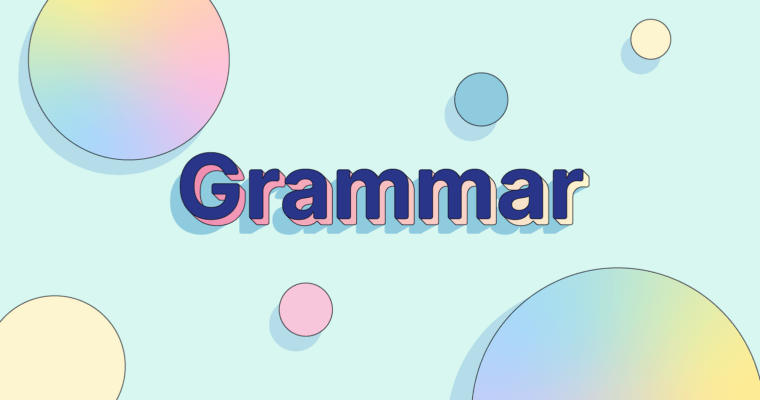
Every sentence has to come to an end eventually, and when you’re writing, the way you indicate the end of a sentence is with end punctuation. Each punctuation mark carries its own meaning and tells the reader how to interpret the sentence they’ve just finished reading.
Here we’ll learn about the different types of punctuation you can use to end a sentence so it conveys your intended meaning.
Table of contents
What is end-of-sentence punctuation?
End punctuation: Less common forms
Formatting end-of-sentence punctuation
End-of-sentence punctuation FAQs
What is end-of-sentence punctuation?
End-of-sentence punctuation is the punctuation used to conclude a sentence or phrase; it’s how writers let readers know when they’re finishing one sentence and moving on to the next. They are like tiny signposts, guiding the reader through a text, making the connections between words in a sentence and between sentences in a paragraph crystal clear.
There are three main forms of end punctuation: the period, the question mark, and the exclamation point. Periods are used for declarative sentences and imperative sentences; question marks are used for questions (also known as interrogative sentences); and exclamation points are used for exclamations and emphatic imperative sentences.
Periods
The period is used at the end of declarative sentences as well as some imperative sentences. It generally gives a sentence a straightforward, even tone.
Periods for declarative sentences
Declarative sentences are the most common of the four kinds of sentences in English. Every sentence in this post so far—including this one—is declarative. They make statements, and they all end with periods. Here are some examples:
- Space programs have used remote probes to explore Mars since the 1960s.
- Yesterday I ate dinner alone, but the day before I ate with friends.
- The driving directions led me to the wrong address.
Indirect questions are also declarative sentences and thus end in a period:
I wonder whether the packages will get here by tomorrow.
Periods for imperative sentences
Imperative sentences are used to express commands, requests, instructions, or sometimes permission or invitation. Their verbs are in the imperative mood, and their subject is an implied you that is being addressed directly. Imperative sentences can end with either exclamation points or periods, depending on how much emphasis or urgency the writer wants to impart. Here are some examples of imperative sentences ending in periods:
- Show me what you got at the market today.
- Don’t forget to breathe from your belly when singing.
- Help me remember the name of the babysitter we had when we were little.
- Join us at the beach tomorrow.
Sometimes imperative sentences can come across as abrupt or curt; adding the word please can soften that impression:
Please take your shoes off before you come in.
Question marks
Question marks come at the ends of interrogative sentences, also known as direct questions. They indicate that the writer or speaker is being inquisitive, asking someone something specific, making a request, or raising a rhetorical question:
- Would you rather eat here or go to a restaurant?
- Did the people who originally lived on this land grow crops?
- Would you mind getting that book down for me?
- How old are their siblings?
- Who wouldn’t want to have a best friend like Jia?
Exclamation points
Exclamation points punctuate exclamatory phrases and sentences. These include exclamations, forceful imperative sentences, and declarations that carry strong emphasis. Exclamation points help express vehemence, urgency, and heightened emotion. They give writing a casual, conversational tone and should be used sparingly if you want them to retain their potency. In formal academic or business writing, they are often best avoided altogether.
Exclamation points for exclamations
Exclamations are sudden expressions of surprise or another strong reaction. When interjections stand alone, they are followed by an exclamation point:
- Oh, no!
- Hey!
- Indeed!
Exclamations can also appear in the form of sentences that begin with what or how or use the same kind of inverted word order that an interrogative sentence often does:
- What a day I’ve had!
- How kind it was of them to return the wallet!
- Isn’t that something!
Often exclamations using the what or how construction leave the subject and verb understood:
- What a day!
- How kind of them to return the wallet!
Exclamation points for imperative sentences
When an order or instruction in the form of an imperative sentence is delivered with particular urgency or force, it is indicated by ending the sentence with an exclamation point:
- Give me the keys now!
- Look out for that car!
- Get out of the way!
Exclamation points for emphatic statements
Sometimes a sentence with a construction that would be declarative if it ended with a period ends with an exclamation point instead to show that it is being delivered with force or excitement:
- The storm is coming very soon!
- We’ve just received new and troubling information!
- I can’t wait to see you next weekend!
In addition to being used as stand-alones with exclamation points, interjections are also sometimes used to begin a statement that ends with an exclamation point:
- Wow, they really didn’t see that coming!
- Gosh, that was an amazing football game!
- Yikes, it’s so much later than I thought!
End punctuation: Less common forms
Ellipses
In informal writing, ellipses are sometimes used at the end of a sentence, either to indicate that a speaker is trailing off or to give the sentence a hesitant, melancholy, or low-energy tone:
- They asked me about my last job, and I wasn’t sure what to say . . .
- Felix isn’t sure whether he is coming to the convention . . .
- This has been such a gray, uninspiring day . . .
Question mark with exclamation point/Interrobang
Often in speech, a regular or rhetorical question is asked in a tone of excitement, disbelief, or confusion. In casual writing, that tone can be indicated by using both a question mark and an exclamation point at the end of the sentence:
- What on earth were you thinking?!
- We get to go on a field trip tomorrow?!
- How am I supposed to know the answer to that?!
As long as there has been printing, there have been attempts to introduce new forms of end punctuation into the English language, and one of the most successful of these was the interrobang (‽), which superimposes the question mark on the exclamation point. It is meant to be a more elegant form of punctuation for questions that require a tone of surprise and doubt.
The interrobang is not commonly used—we mostly write the combined question mark and exclamation point when we want to show that a question is being asked with surprise or doubt.
Irony marks
A tone of verbal irony can be particularly hard to make clear in writing, and as a result, many new end-of-sentence punctuation marks have been suggested over the centuries to show that a sentence is meant to be read as sarcastic or otherwise verbally ironic—meaning its actual meaning is at odds with its literal one. However, none of these marks so far have been widely accepted by mainstream writers, readers, or publishers.
Tone and end punctuation
As we discussed above, the punctuation at the end of a sentence imparts a certain tone to the sentence.
Declarative sentences, which always end with periods, have an even, matter-of-fact tone. When an imperative sentence ends in a period, it has a tone of polite request or calm demand. Interrogative sentences, which end in question marks, have an inquiring or requesting tone. Exclamations, which end in exclamation points, have an emphatic, excited, or otherwise emotionally heightened tone. And imperative sentences ending in exclamation points have a more demanding, urgent, or excited tone.
To demonstrate the way punctuation does this, here are three similar sentences with the three different forms of end punctuation; notice the differences in tone:
- I need you to take a look at this.
- Look at this.
- Would you mind taking a look at this?
- Would you look at this!
- Look at this!
Formatting end-of-sentence punctuation
There are a few things to keep in mind when formatting punctuation marks at the ends of sentences:
- There should always be one space, not two, after an end-of-sentence punctuation mark.
- When a sentence ends with an abbreviation that itself ends with a period, you don’t add another period to end the sentence (We need papers, pens, stamps, etc., not We need papers, pens, stamps, etc..).
- The question of whether to bold or italicize an end punctuation mark based on the way the surrounding copy is formatted is a matter of publishing style; different style guides have different recommendations. If you’re writing for an outlet or a class that uses a specific style guide, refer to that guide. If not, choose a formatting style and apply it consistently.
End-of-sentence punctuation FAQs
What are the three main forms of end-of-sentence punctuation?
The three main forms of end-of-sentence punctuation are the period, the question mark, and the exclamation point.
What are some examples of less common end punctuation marks?
In casual writing, sentences sometimes end with an ellipsis, which can indicate trailing off or uncertainty, or with a question mark and an exclamation point together, which makes the sentence read as a surprised or disbelieving question.
There is also the interrobang, which combines the question mark and the exclamation point into one punctuation mark, and several marks that have been proposed throughout history to indicate verbal irony. However, none of these are in common usage today.
How does end punctuation affect the tone of my sentence?
Periods often finish declarative sentences, giving them an even, matter-of-fact tone.
Question marks finish interrogative sentences, which have an inquiring or requesting tone. Exclamations, which end in exclamation points, have an emphatic, excited, or otherwise emotionally heightened tone.
Should I type two spaces after a closing punctuation mark?
No. The space between sentences should always be a single one, not a double one.



